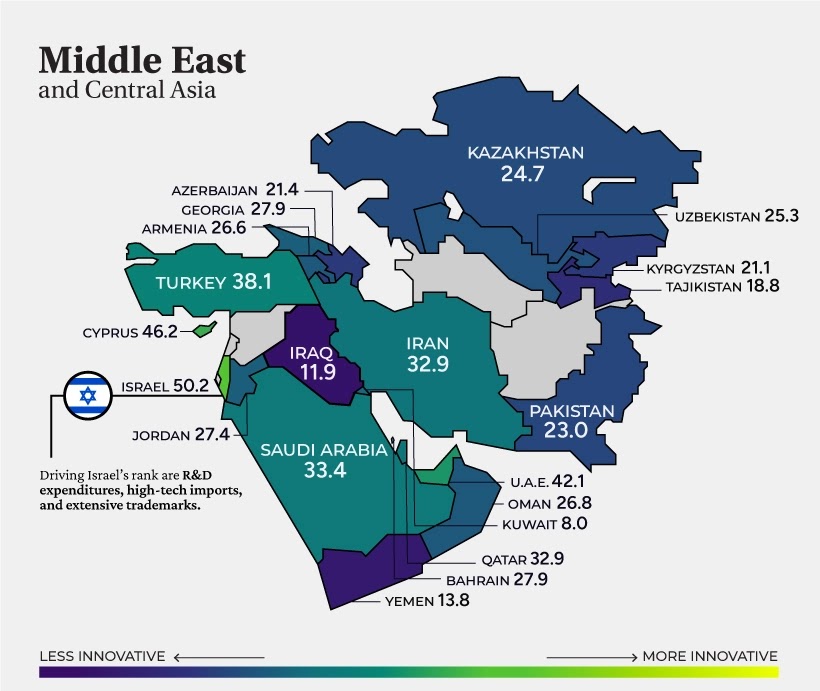With research and development spending tripling in the past 20 years to reach the staggering sum of $2.4 trillion, it has become clear that countries are emphasizing innovation in whatever way they truly can. The US used to be the global leader in innovation spending back in the 1960s, comprising 70% of global R&D spending in that era.
In spite of the fact that this is the case, many other countries have entered the fray thereby reducing America’s share to just 30%. The UN just put out its innovation index which assigned a score to various countries based on 7 pertinent factors.
The first of these categories was Business Sophistication, which gauged how much foreign investment a country received as well as its own spending on business related R&D. Second was Market Sophistication which factored in how big a country’s GDP was as well as the level of competition in its market.
Infrastructure was yet another factor, as was Human Capital which measured the quality of the research institutions as well as government spending per student. The ease of doing business, creative output as well as knowledge and tech output rounded off the list.
With all of that having been said and now out of the way, it is important to note that Switzerland topped the list with a score of 64.6. That might come as a surprise, but Switzerland has topped the list for the past twelve years thanks to its world class IP laws as well as strong links between academic institutions and industrial ones.
The US missed out on the top spot despite R&D spending in excess of $700 billion and four out of the five highest R&D spenders being located there. It still managed to reach number 2, with a score of 61.8.
Sweden came in at a close third with 61.6, followed by the UK with 59.7. The Netherlands rounded off the top five with 58. Following the Netherlands we had the highest scoring country from Asia, namely South Korea, with a score of 57.8. Singapore was not far behind with 57.3, confirming that these two nations are driving much of the innovation outside of Europe and the US. Germany, Finland and Denmark rounded off the top ten with scores of 57.2, 56.9 and 55.9 respectively.
Zeroing in on South America, one might assume that Brazil would be the most innovative country in that region. However, Brazil’s score of 32.5 was surpass by Chile’s 34. Chile has a huge tech industry of 8,000 companies which is useful because of the fact that this is the sort of thing that could potentially end up driving a lot of innovation. The least innovative country in South American turned out to be Ecuador.
Moving on to the Middle East and Central Asia, Israel managed to reach the top spot with an impressive score of 50.2. That is thanks in no small part to 5% of its GDP being focused on R&D, the highest proportion out of any country in the world. Kuwait performed dismally despite being wealthy, with a paltry score of just 9 which put it at the bottom of the rankings.
H/T: VisualCapitalist
Read next: Americans Have Less Working Hours But Their Pay Is Higher than The Poor Countries in Which Workers Have Long Working Hours
by Zia Muhammad via Digital Information World







No comments:
Post a Comment